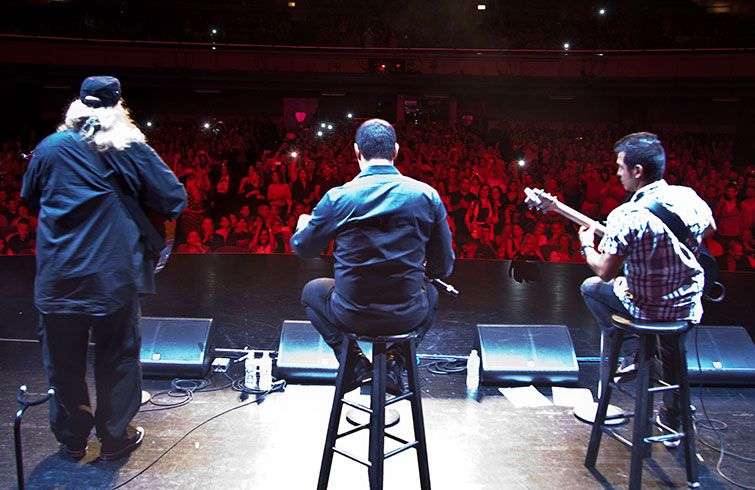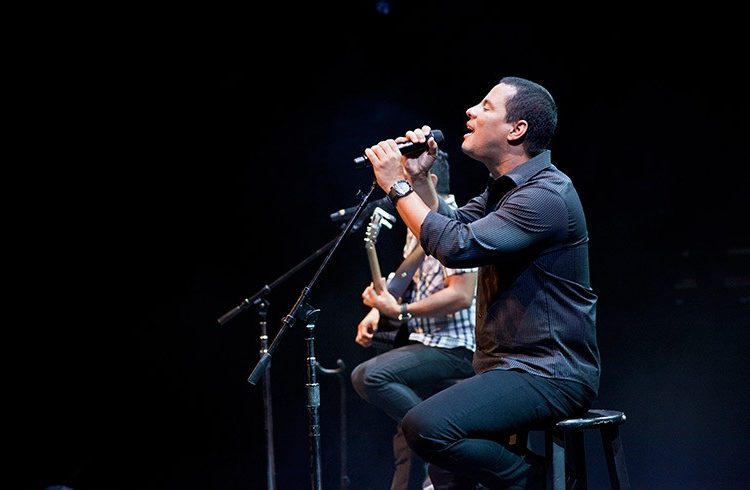It’s not a surprise anymore. Every weekend, Miami fills up with Cuba. Wherever you go, you find music, dancing and enjoyment. Little by little, the city is abandoning the sordid space of memory and looking at the island’s culture as a friendly part of daily life.
While the Torricelli bill, in its Track Two form, outlined the people-to-people policy with the goal of the participation of Cuban academics, artists, and intellectuals in U.S. forums, what has come to be called “cultural exchange” is a different phenomenon. Beyond ideology or a deliberately political use of the issue, what is happening far exceeds any predictions.
In culture, the elements associated with the constitution of nationality travel with immigrants. Nobody finds it strange that in cities marked by certain immigrant populations, these populations cultivate and extol their cultures. In the case of Miami and Cuba, a sector of the Cuban community sees the growing participation by artists from the island as a deliberate maneuver by the Cuban government to influence, penetrate and weaken anti-government positions.
The accusation of unequal exchange is made; that Cuban artists based in Miami cannot perform in Cuba and don’t enjoy the same freedom of expression there enjoyed by some musicians in defending their ideas in Miami.
This same sector wants Willy Chirino, Gloria Stefan and Paquito d’Rivera to perform in the Plaza de la Revolución, and to be allowed to express themselves politically. But it has been these artists themselves who have set conditions on going to Cuba.
It is at least questionable that artists should renounce having a natural relationship with their public. It is strange that they should set conditions, or shield themselves behind a government. With that attitude, the only ones deprived of enjoying their art are the same people they are claiming to defend.
What’s certain is that with or without conflicting positions, increasingly more émigré artists are performing in Havana’s plazas. Some of them have expressed a desire to move back to Cuba, such as Manolín, “El Médico de la Salsa,” or Issac Delgado. Others, such as Tanya or Pancho Céspedes reunite with their natural public without any complexes, and with the freedom of offering their art to those who want to enjoy it.
The media is trying to create the idea that there is a Ministry of Cultural Exchange that is contrary to the interests of the Cuban community. For them, the United States is an accomplice to the Cuban regime, because it permits a disparity to exist between the number of artists who come and go. They don’t understand that in any case, the exchange is not between Cuba and Miami; it is between Cuba and the United States. There needs to be an understanding that this participation is a result of the logic of interaction between an artist and his or her public, not political planning.
The most recent incident was caused by the Buena Fe concert at the Miami Dade Auditorium. Those opposed to Cuba’s social project attacked the performance and tried to sabotage it in every way possible.
For once, common sense prevailed and the mayor of Miami-Dade County, Carlos Giménez, said that the concert would not be suspended, and that in his county, despite the protests, U.S. law would be upheld. On the day of the concert, at about 5 p.m., according to the Miami Police, the peak number of “protesters” was reported to be about 300. At the start of the concert, three hours later, almost 2,000 people were singing “Cuba Va” and the other 22 songs that the duo played for their public.
Neither the 300 people protesting outside nor the almost 2,000 enjoying the concert represented the entire Cuban community resident in the United States, but while these may be antagonistic forms of participation they don’t necessarily have to be exclusive. You can’t describe as anti-Cuban somebody who thinks that praising Fidel or Raul can be offensive for part of the émigré community, in the same way that loving them cannot be a motive for being insulted. In the end, we enjoyed the concert without worrying about the placards or the shouts of “communist” and insults. They enjoyed their protest as well, without worrying about the fact that in the theater, people were on their feet singing the songs that have accompanied a generations of Cubans for the last 10 years.
Of the Cuban artists who fill Miami’s halls, not all are coming from Cuba. The dynamic itself of culture, along with demographic changes in the émigré community, show that the times of exclusion are over. Recently-arrived Cubans want to stay in touch with their culture; they want to enjoy their music, film, and visual arts. The same way that they go to the concerts of Los Van Van, La Charanga, David Torrens or former members of Habana Abierta, they also seek out Cuban soap operas, TV series and movies on the Internet.
It is time to stop using the phrase “cultural exchange” for what is a natural reencounter between members of a cultural community with its own identity. The participation of art produced on the island in North American spaces is for the North American public a way of approaching the culture of a neighboring country that it cannot fully enjoy because of an absurd policy. For Cuban immigrants, it is a question of being in contact with our identity, with their common noise, with the atmosphere from which we have distanced ourselves but which we have never given up.
Culture is the soul of the nation. Beyond any slogans that attempt to place equal signs between homeland, state, country, government, and nation, it is through culture that identity becomes rooted, something that rises above any specific ideology or politics.
A Cuban arrives at this piece of land 90 miles from home and feels that its smells, mixed in with the sea and traditional food, is what defines him. Hundreds of Cuban flags line the main streets of this city and at every other step, an ad reminds you that you can send money to your family, or how cheap it is to call the island.
Now, Miami also sounds like Cuba.











